As political polarization grows more intense under Trump’s administration, fashion reflects the social climate and political events of the moment.
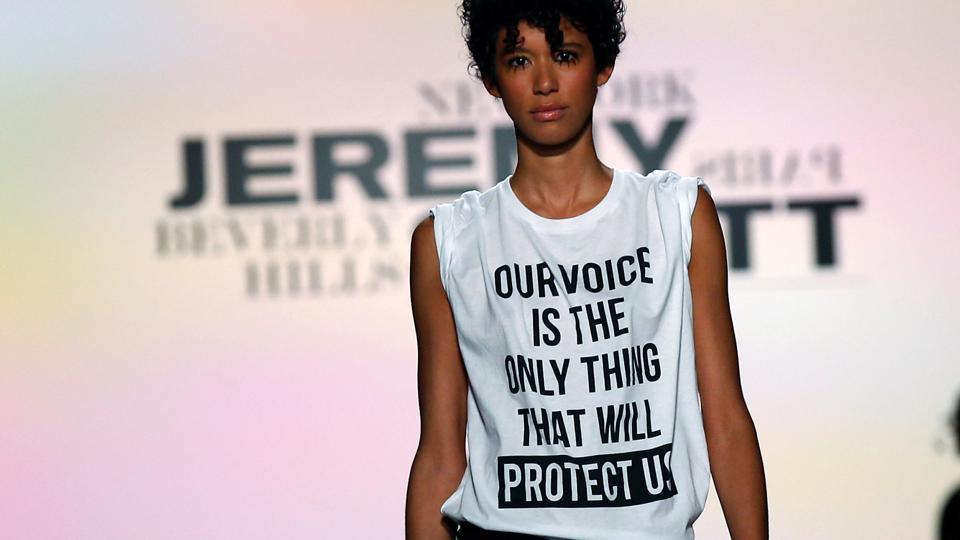
Whilst fashion has always had political dimensions, serving more than merely its primary purpose of covering the body, the two have traditionally been understood as existing independently from the other. With a painfully divisive political climate on the rise, however, fashion has grown increasingly political, with many designers zoning in on the sartorial set’s ability to comment prominently on politics, gender, race and religion.
Last weekend’s atrocities in Charlottesville were a painful reminder of how polarized the political climate (specifically in the U.S.) has become. With Trump’s $1.57 billion wall between the United States and Mexico approved by the House last month, this divisive climate shows no signs of abating. Speaking out directly against Trump’s wall is Paris-based label Each X Other. The art-meets-fashion label collaborated with artist Robert Montgomery to present a collection of items that read ‘NO WALLS BETWEEN US.’
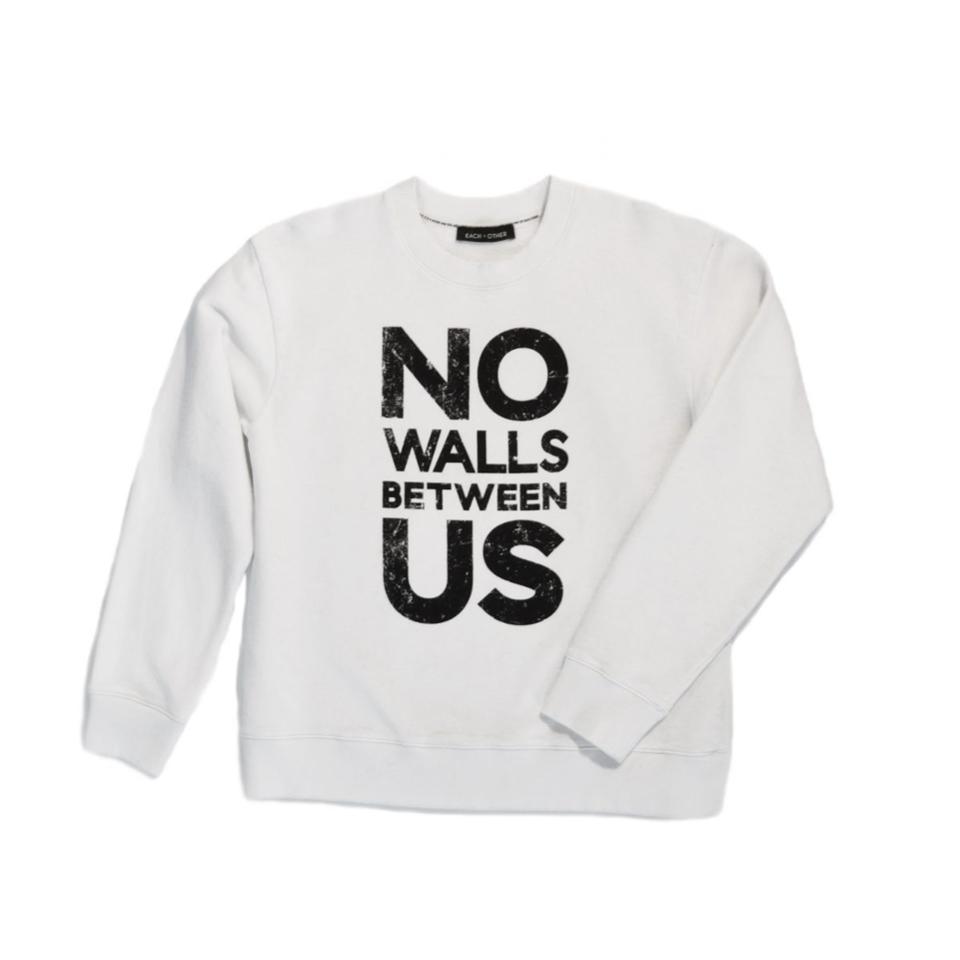
Of course, Each X Other is not the first fashion label to directly respond to recent political events. 2016 was the year that designers expressed their viewpoints of the zeitgeist, largely centring around significant political events: the fall of Eastern Aleppo, Brexit and the U.S. Presidential Election to name but a few. At New York Fashion Week Fall 2017, designers used the medium of the fashion show to comment on Trump’s presidency, his agenda and the policies he has enacted since becoming commander-in-chief. There was a collective outcry that opposed the president’s opposition to Planned Parenthood, the ban on refugees and the lack of diversity in his cabinet members. Undoubtedly, politics has risen to surface level, spilling over onto the catwalks of the world’s most prominent fashion weeks. Let’s explore the activity, anxiety and revolt that all came under fashion’s microscope over the last eighteen months.
Early February 2016: Beyoncé strides onto the field at Levi’s Stadium in Santa Clara for the Super Bowl 50 halftime show, with an army of backup dancers in outfits that pay homage to the Black Panthers, to perform ‘Formation.’ The song was to become the anthem of the Black Lives Matter movement and shake the music industry for its outwardly political messages.
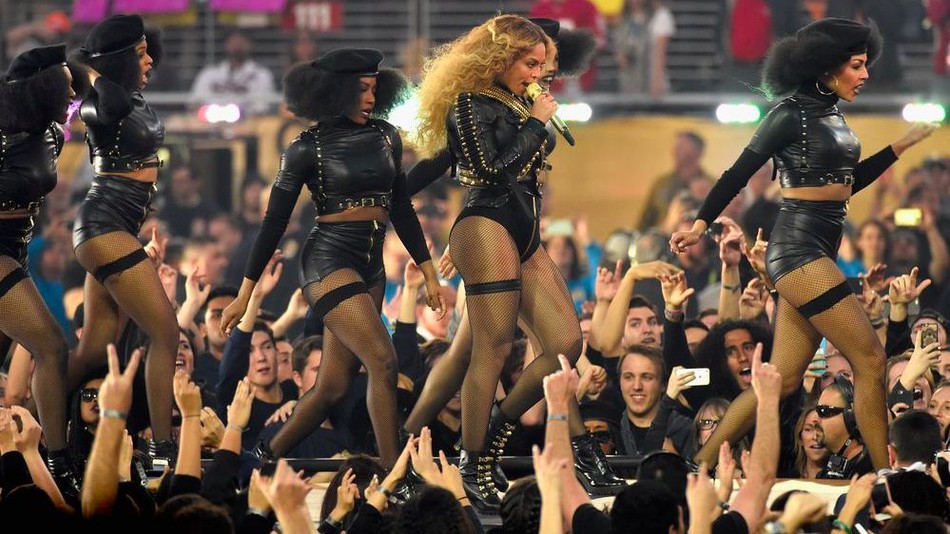
March 2016: Laurence Rossignol, the French Minister for Families, Children and Women, described the promotion of Islamic fashion by major brands as ‘irresponsible,’ scolding designers from Marks & Spencer (who unveiled their first ‘burkini’) to Dolce & Gabbana, for catering to the Muslim market, accusing them of ‘promoting women’s bodies being locked up.’ The hijab became a symbol of the debate of whether freedom includes the freedom to wear whatever you choose, and the issue went global. Anniesa Hasibuan became the first designer to pair a hijab with every look of her show during New York Fashion Week and Condé Nast International started Vogue Arabia.
June 2016: An anti-Brexit was the statement made by many British labels. Sibling designers Sid Bryan and Cozette McCreery donned T-shirts that read ‘IN’ to take their post-show bows and designer Daniel W. Fletcher staged a sit-in outside the London men’s wear show site, dressing his protestors in ‘Stay’ apparel.
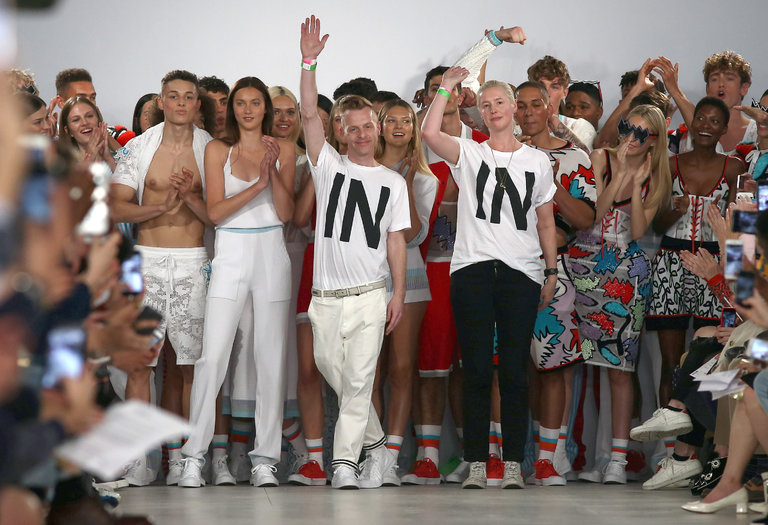
July 2016: This was the month that female politicians took centre stage, causing a torrent of stories surrounding their fashion statements. Theresa May became Britain’s second female prime minister, making headlines about her fanciful footwear, which she joked about being a tactical ‘icebreaker’ in high-level meetings.
Hillary Clinton made history as the first woman to be a major party nominee for president, standing onstage at the Democratic National Convention in a white Ralph Lauren pantsuit, bringing full circle the history of women’s suffrage. The colour white has a long political history of female wearers; first adopted by the suffragettes as one of their signature colours, and later traced by Shirley Chisholm who donned white in 1969 when she became the first African American woman elected to Congress, and Geraldine Ferraro, who also wore white as she accepted the Democratic vice-presidential nomination in 1984 (the first woman to do so).

Clinton’s signature pantsuit became the look of Autumn that year. In October the ‘pantsuit power’ flash mob demonstrated their support of Clinton in New York’s Union Square, and their video went viral. Continuing the trend, Pantsuit Nation, an online community of millions of Clinton fans emerged in support of political activism and engagement. On election day, thousands of women went to the polls in pantsuits or white to cast their votes.
September 2016: The political events of September were reflected on New York Fashion Week’s catwalks, with the models dressed in the fabric of that year’s political struggles. The first day kicked off with a benefit for Mrs. Clinton, hosted by American Vogue editor, Anna Wintour, who wore a dress designed by Jason Wu featuring a mosaic of the different states in varying shades of blue.
Opening Ceremony staged an ersatz beauty pageant, subverting the traditional values of the likes of the ex-Trump-owned Miss Universe. The ‘pageant’ featured Natasha Lyonne and Whoopi Goldberg talking electoral issues.
Notes from the show read:
‘On the surface, fashion has little to do with politics. Yet when we get dressed, we make decisions about which aspect of ourselves to present to the world. When we asked our friends about the issues that matter to them… immigration, economic inequality, police brutality, and gender discrimination, among others — we were struck by how many of them hinged on the ability to express one’s identity freely.’
In Paris, Dior’s creative director Maria Grazia Chiuri championed female empowerment, splashing ‘We Should All Be Feminists’ (after Chimamanda Ngozi Adiche’s essay of the same name) across T-shirts.
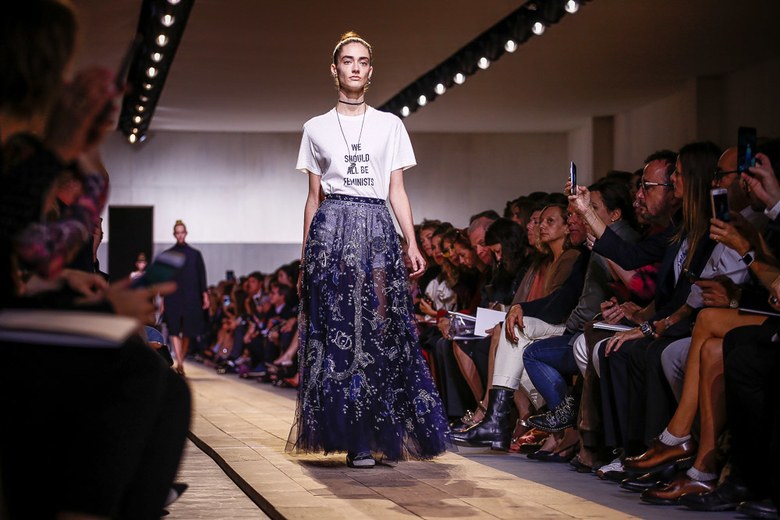
By the following year, political statements were dominating the runway. February’s New York Fashion Week presented a decidedly more cerebral vibe, kicking off the week with pink buttons designed by Conde Nast Creative Group for the Council of Fashion Designers of America (CFDA), which read ‘Fashion Stands With Planned Parenthood.’ The buttons were distributed at several shows, eventually making their way onto a look on the runway at Tome, with the impetus of raising awareness on the part of Planned Parenthood as it navigated the risk of being defunded by the federal government.
Then there were the overt statements made by a number of slogan t-shirts: Alice + Olivia had a printed T that said ‘Be The Change You Wish To See In The World,’ Creatures of the Wind’s said ‘We Are All Human Beings,’ Pyer Moss’s said ‘Nothing To Say,’ and Prabal Gurung had a number of declarations, including ‘We Will Not Be Silenced’ and ‘Girls Just Want To Have Fundamental Rights.’ R13 emblazoned their T-shirts with Trump’s face and a line that read ‘God Save the U.S.’
Dao-Yi Chow and Maxwell Osborne of the label Public School followed with a parade of slogan caps that read ‘Make America New York,’ a rip-off of the ones that Trump and his supporters wore on his campaign trail. Angela Missoni followed suit, ending her show with a catwalk full of models in pink knit pussy caps.

Most notably, the runways showcased models from a whole range of diverse backgrounds. Diversity has always been a prominent issue in fashion, with a feeling of lack of representation for our majority – something it shares with politics. However, in an effort to promote how ‘We Are All Human Beings,’ the week presented a melting pot of models of different races, sizes and creeds.
Mara Hoffman’s presentation cast some of the Women’s March co-chairs alongside models and dancers and J. Crew also jumped on this bandwagon, including ‘real people’ in their presentation. Prabal Gurung, Tome, Christian Siriano, Chromat and Michael Kors were also among the masses that championed a range of strong, resolute women from different backgrounds to amplify their collections.
Of course, trends come and go, but politics on fashion’s front line seems to be more than just a novelty act adopted by NY’s Fashion Week.
Only Last month, New York based DJ-designer Steve Aoki made a political statement as he revealed his SS18 Dim Mak collection Paradise Found. The collection included designs such as palm trees made out of barbed wire and imagery of guard dogs and burning cars. Speaking to PEOPLE Aoki explained that the designs were inspired by the current politics in the U.S.:
“One of the feelings I got when we started developing this mood board was we live under the Trump presidency. We live in a state of chaos.”
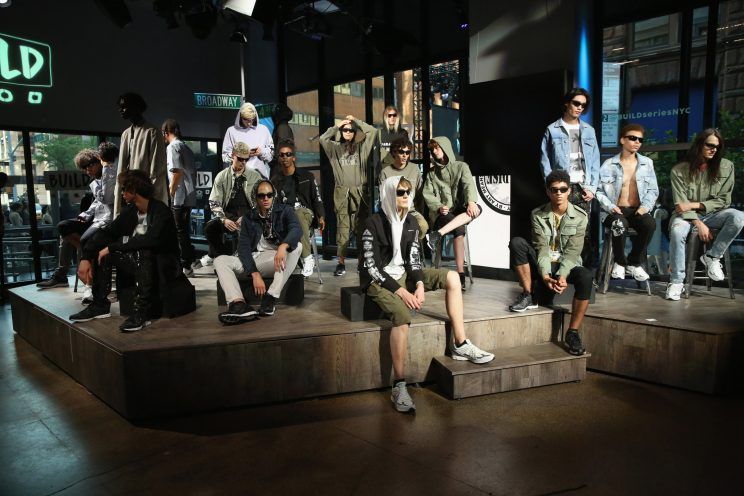
Indeed, fashion, like any art form, has always had political dimensions. What is unprecedented, however, is how intensely political fashion has become. There seems to have been a shift in the atmosphere that has impacted the exterior and interior worlds of designers, translating over to the catwalks of the past eighteen months.
Still, irrespective of the wider social and political context, the takeaway is that emotional, political intensities have risen to surface level. Fashion is, of course, only a minuscule form of protest, but it is, nonetheless, an empowering mode of expression in a world where the first line of communication is visual.







